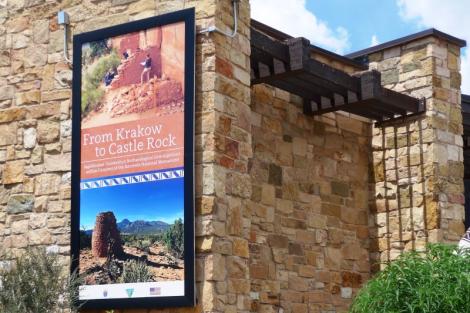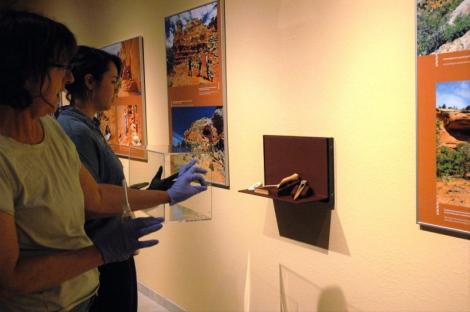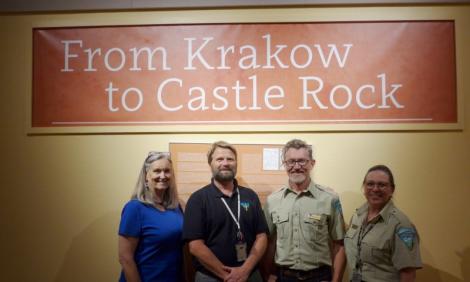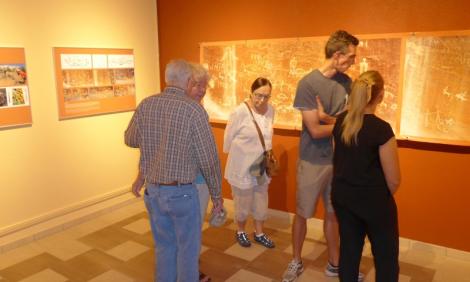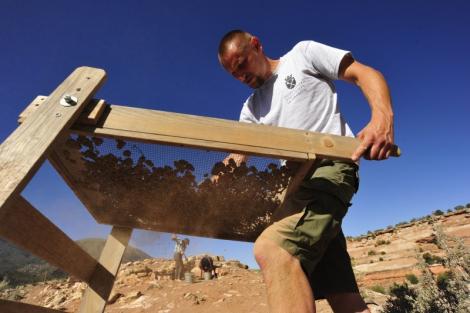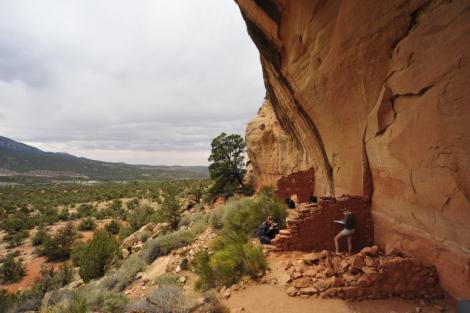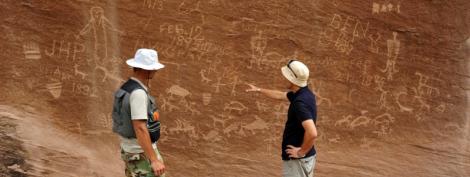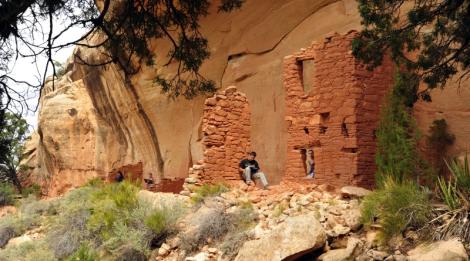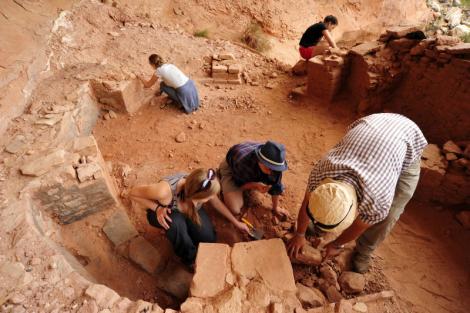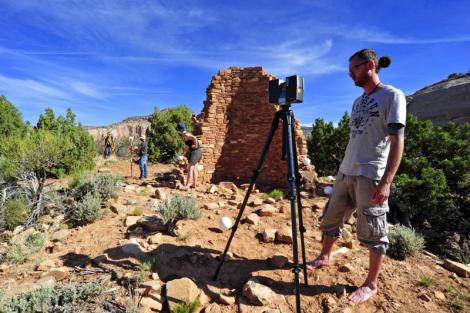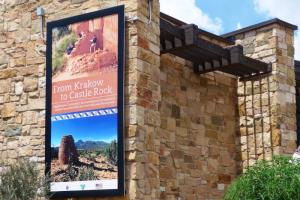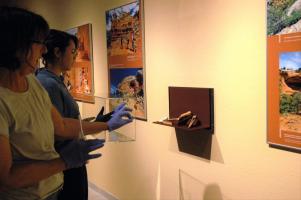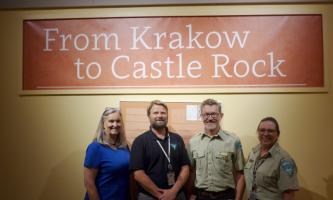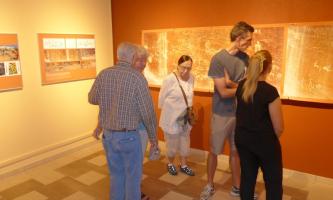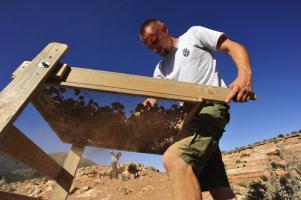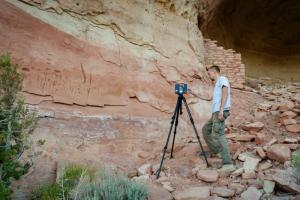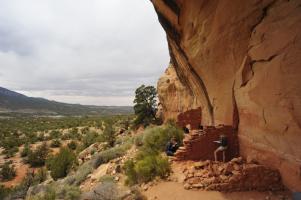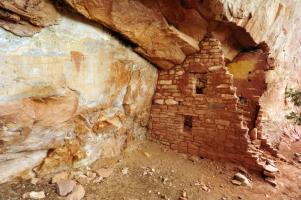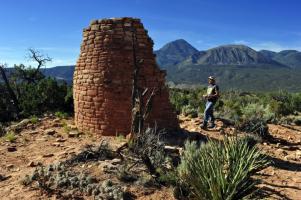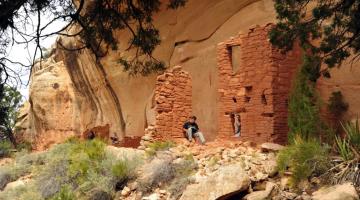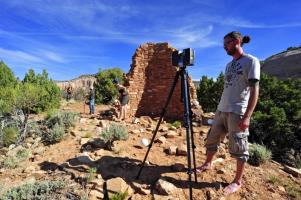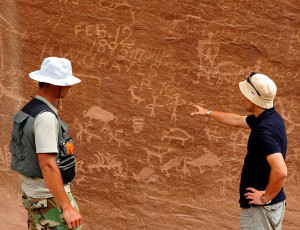
On 7 July, an exhibition displaying objects discovered by JU Institute of Archaeology staff was opened in the Canyons of the Ancients Visitor Center and Museum in Colorado, USA. The bilingual exhibition, entitled ‘From Krakow to Castle Rock. Jagiellonian University’s Archaeological Investigations with Canyons of the Ancients National Monument’, will stay open until the end of July 2019.
In 2015 and 2016, the exhibition was displayed in the JU Museum Collegium Maius, Poznań Archaeological Museum, and the Historical Museum in Bielsko-Biała. Currently, it features additional objects, including audio-visual materials, models, and visualisations created by JU archaeologists using innovative technologies, such as photogrammetry, geophysical research, and laser scanning.
The JU Institute of Archaeology has been conducting independent research in the Mesa Verde region in Colorado since 2011. It is the first independent Polish archaeological project in the USA and one of the very few European research studies of that region. It is led by Dr Radosław Palonka. Most of the displayed photographs have been taken by Robert Słaboński.
Mesa Verde, the region bordering four American states – Arizona, Colorado, New Mexico, and Utah – is one of the richest in the USA when it comes to archaeological findings. It is known mostly for the pre-Columbian architecture of the Pueblo people, consisting of houses and apartments constructed in ravines and recesses as well as on steep mesas and rock ledges. Despite the arid climate, it was this place that gave birth to one of the most agriculturally advanced native communities in North America. To this day, it is still inhabited by native tribes such as the aforementioned Puebloans, Apache, and Navajo, who feel a deep connection to the land and practice a lot of their ancestral traditions and customs.
The JU archaeologists’ research is chiefly concerned with reconstructing the settlement network as well as investigating the socio-cultural transformations that happened within the system of forty smaller villages and one large settlement of the Pueblo culture, dated at the 13th century. They are located in three canyons: the Sand Canyon, the East Fork of Rock Creek Canyon, and Graveyard Canyon (the last one lies within the borders of the Canyons of the Ancients National Monument). Another aspect of the research is documenting and performing an analysis of cave art in those canyons (including an additional fourth one, Sandstone Canyon), where the researchers have found previously unknown cave galleries containing murals and petroglyphs from various periods of time. It is precisely because of the amount of native art found in the region that it was dubbed the ‘Wild Louvre’. The Polish research has proven that during a time of adverse climate changes and increasing threats of wars and violence in the second half of the 13th century, the tribes living in the area formed a close-knit alliance.
In order to investigate the matter thoroughly, the archaeological team has been collaborating with the Hopi people – direct descendants of the Puebloans, who nearly 800 years ago built their settlement in the Mesa Verde Canyons, and at the end of the 13th century migrated south to Arizona and New Mexico.


